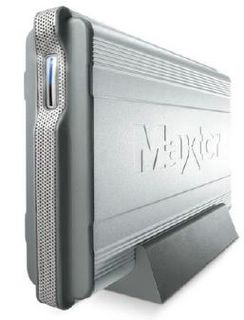The Desk Top PC used to generate this web site is an Alienware 5500. The software Operating System is Microsoft Windows XP, Professional Edition. The system is in a large tower case, so there's plenty of room for expansion.

PC 
The CPU Benchmark as stated when the system shipped is: Dhrystone ALU 3966 MIPS and Whetstone FPU 3455 MFLOPS {before upgrades}
The
Processor is an AMD Athlon 64 4800+ X2, capable of using 64 bit software and runs at a speed that appears to be 4.8GHz. The real clock speed is 2.4GHz. The processor uses an AMD
Socket 939.
The
Memory Modules used are four 512MB SDRAMs for a total of 2G Byte of memory. The style/speed of the memory chips are DDR512,
PC3200.
The
MotherBoard is an ABIT AV8 using a VIA K8T800
Chip Set. The MotherBoard also supports the
IEEE 1394 bus at speeds of 400/200/100 Mbps. The
USB 2.0 standard interface, at speeds of 480 Mbps. The
S/PDIF digital audio interface standard is also included. Mother Board pic
hereThe
Video Adapter is a ATI Technologies Inc. Radeon 9550 with
128MB of on-board memory. The MotherBoard supports the
AGP video bus at 4x and 8x speeds. There are 5 additional
PCI slots for expansion. {I was surprised that this system was not offered with a
PCI Express solution, as the AGP bus was the only option ~ obsolete in my opinion.}
The
Hard Disk Drive is a Barracuda 80G byte
Serial ATA drive by SeaGate with an 8Mbyte buffer and spins at 7200 RPMs. The drive supports S.M.A.R.T. commands, and SATA-150. I added a second Harddrive; a 74GB Raptor from Western Digital Corporation, also with an SATA interface. The OS runs off the Barracuda, and the web site files reside on the Raptor. I also have an external HardDrive running over the USB bus. The external drive is a 100G Byte Maxtor One Touch II with auto back-up. The sustained USB-2 transfer rate of the external Maxtor is 34MBps, or up to 480Mbps. The 34MB/sec rate seems a little low, but I do like the auto-backup software, which I have not used for years ~ back when I had a tape drive system.
The system did ship with a
Floppy Drive and still has the stock cpu
Fan, and a 460 watt
power supply. I'll change out the fan/heatsink if and when I up-grade to a dual core processor. Having the floppy disk drive is really a waste of chassis space, but the system still has spare bays, so it will stay for now.
The
Mother Board has an Integrated 5.1 Audio Surround Sound with Digital Out. I upgraded the system with a Creative Labs Sound Blaster X-Fi Platinum Sound Card. The sound card also comes with a 5 1/2 bay control box and a remote. Here is a pic of the
Drive Bay Connected to that I added a Logitech X-530 5.1 Surround Sound
Speaker system. Here is a pic of the
SpeakersThe system has a dual
video monitor system. I have a 19" flat screen as my main monitor connected to the
DVI video input. I also have a second 19" flat screen next to it which is connected to the
VGA input on the computer. One Flat Screen monitor was made by Balance Digital Technology, the other by ic Power, and have SVGA resolutions. Both are TFT with SXGA displayable resolution.
I use a Logitech 'QuickCam Orbit' for the web cam; pic
hereI connect to the web via a Linksys Wireless broadband router. The router operates at 2.4GHz over
802.11b to support my laptop. The desktop is hard wired to the router. I connect to the internet over cable. Router pic
hereThe
printer is manufactured by Brother International Corporation, the model number is 5840. Here is a pic of the
printer. This is an inkjet printer, plus it will Fax, Print, Copy, Scan, PC Fax, and PhotoCapture. This includes a flat-bed scanner. The major features other then the printer function include either a
USB Bus and/or an
Ethernet Bus interface, a RJ45 33.6k fax connection, and a Digital Media Card reader. The Printer started out on an Ethernet cable interface. The printer may also be on a USB wireless printer server. The Printer server is a Linksys WPS54G, the detailed posting for the print server is here:
interfacebus: New Wireless Print SeverThe HP printer that was replaced by this new one included a
IEEE-1284 interface. Here is a pic of the old printer:
HP PC Printer.
The
notebook computer I use is an HP pavilion, ze4800. The HP uses an AMD Athlon 2800+ at 508MHz, and has 256MB of PC2100 RAM [in one of two slots]. The computer uses a Linksys Wireless-G
PCMCIA card to connect to the router [but it almost never connects, unless the PCs are in the same room]. The laptop OS is Windows XP, Home Edition.
I use a UPS from APC, XS800 BLK, additional info is listed here:
interfacebus: Un-interruptible Power SupplyThe system also has a wireless range expander [repeater] to assist the laptop connecting to the desktop / router. The range expander is a Linksys WRE54G. The posting for the Wireless Expander is here;
interfacebus: Wireless Repeater













